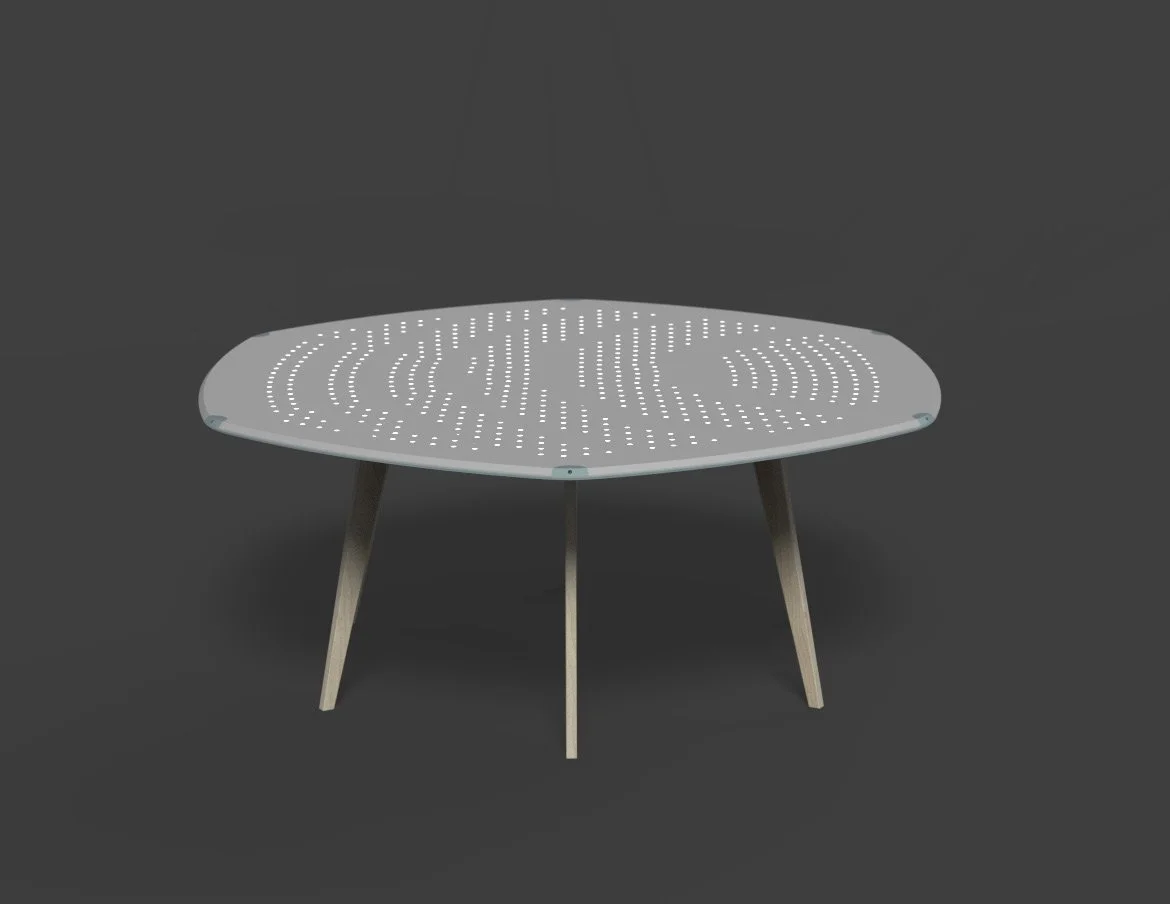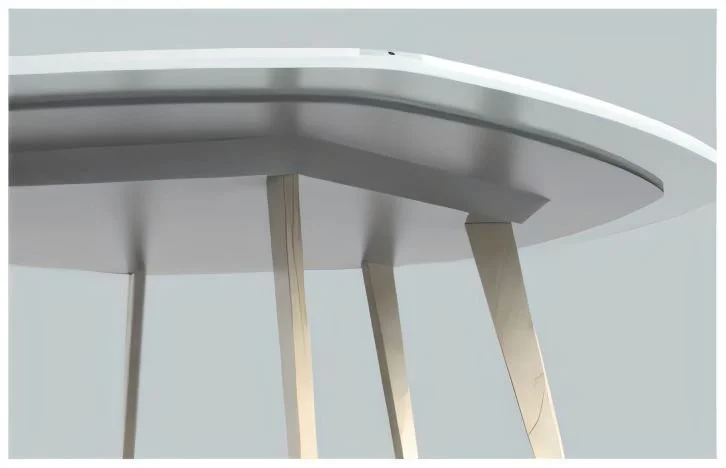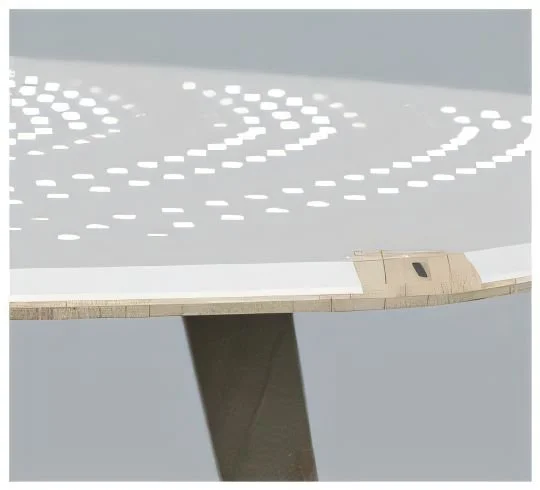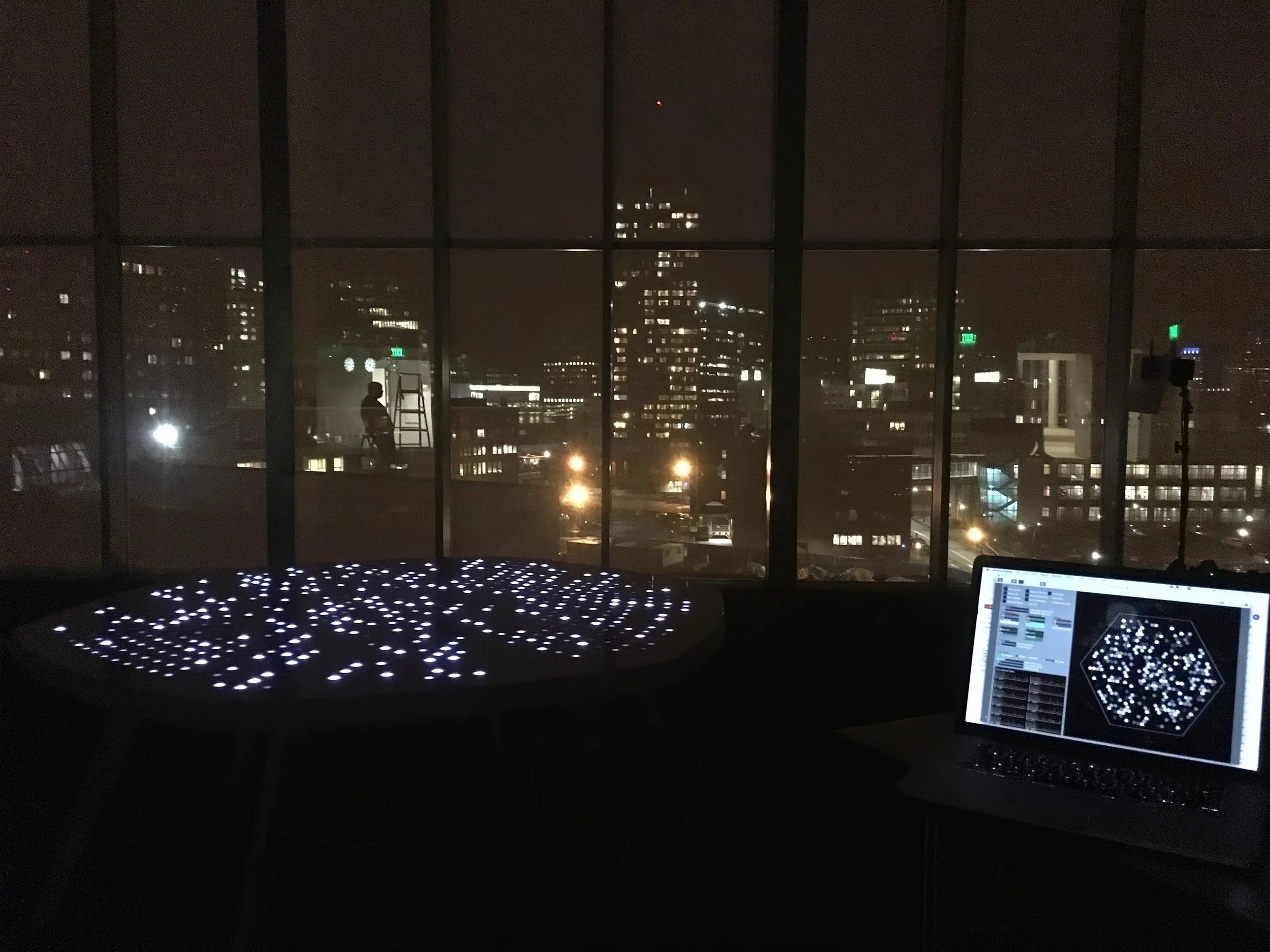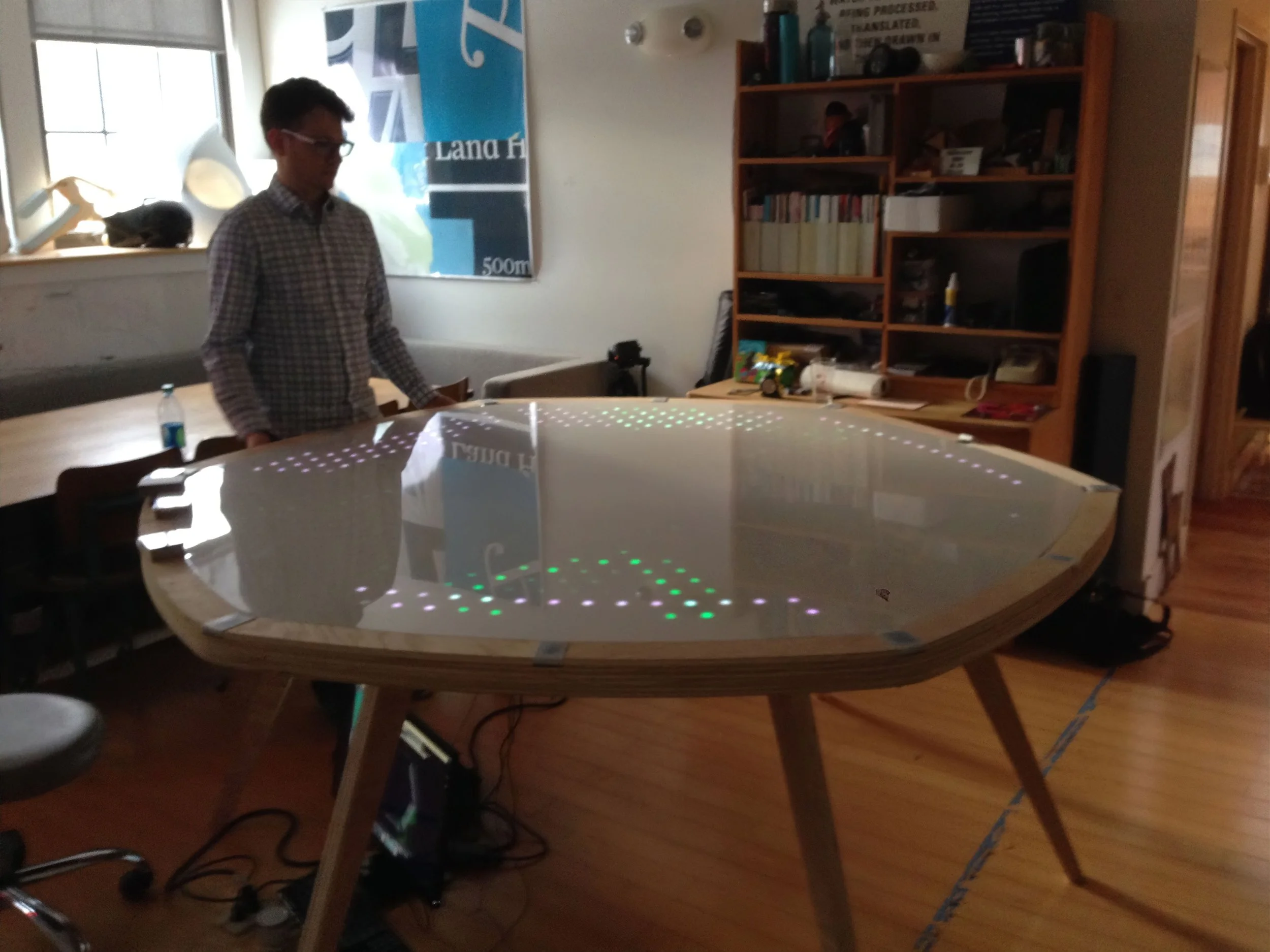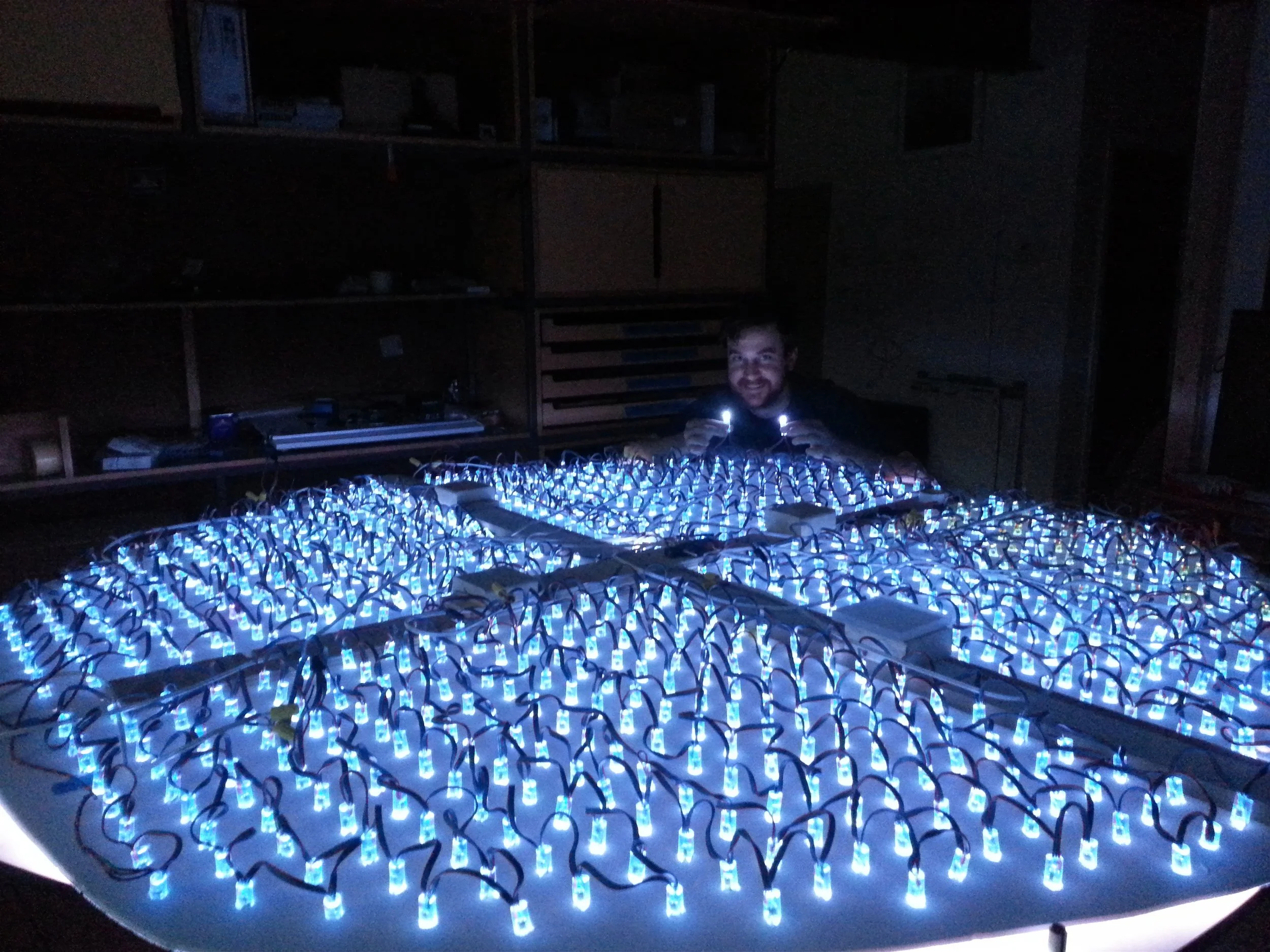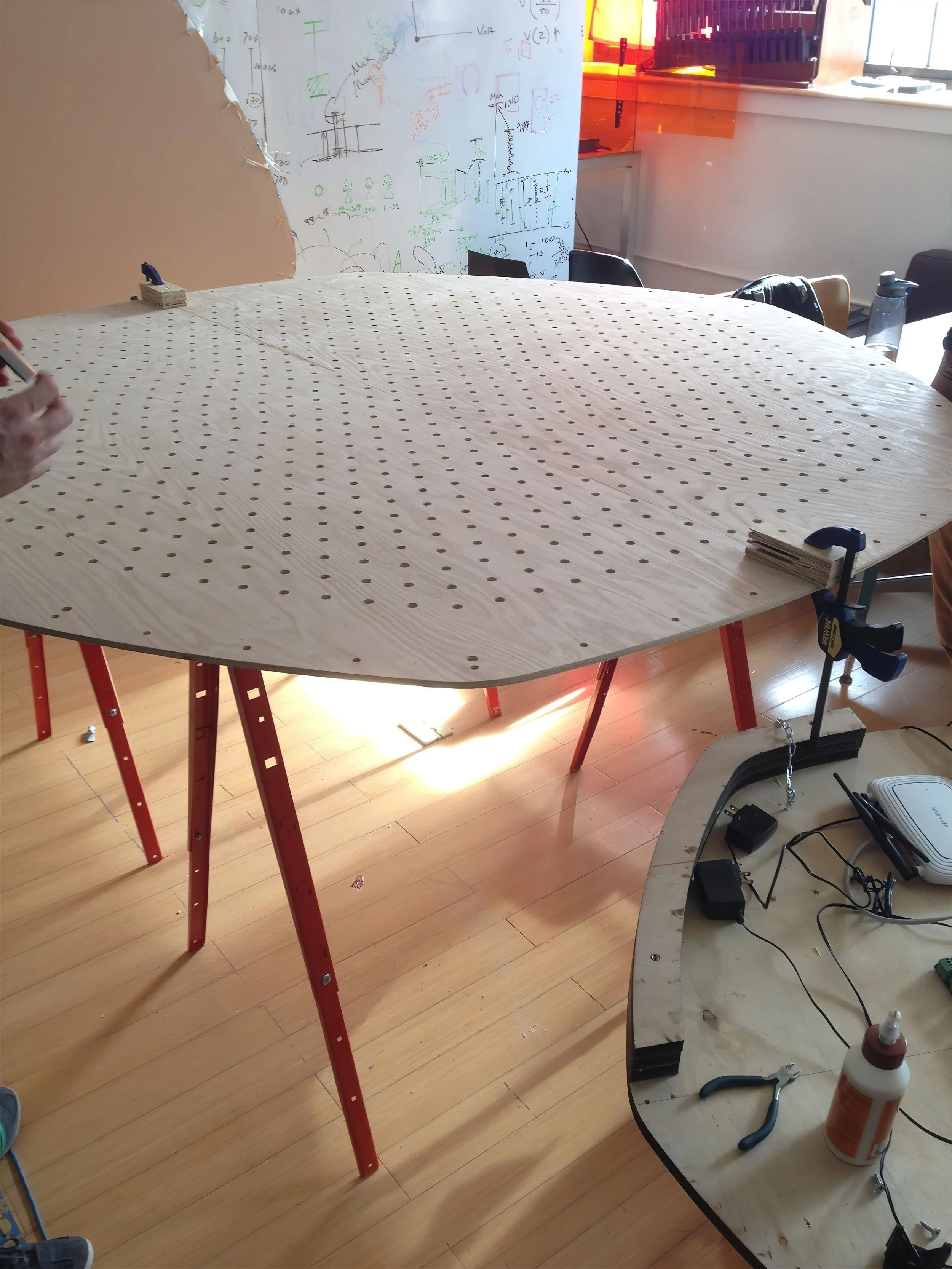Balance Table is a hexagonal conference table that integrates directional microphones and embedded LEDs to visualize patterns of participation in group conversation. Constructed from durable Corian and rock maple, it conceals a constellation of LEDs just beneath a flush, translucent surface, producing smooth, continuous lines of light without visible breaks. As participants speak, a soft pulse of illumination appears in front of them, gradually increasing with speaking duration. The effect is ambient and non-intrusive, making speaking time perceptible without overtly directing behavior.
The design draws from research in social dynamics and is informed by ideas in Susan Cain’s Quiet, which addresses the imbalance between introverted and extroverted voices in group settings. By embedding this feedback in the furniture itself, the work shifts facilitation from a human role to an environmental one.
At Tellart, I led the design, development, and testing of the Balance Table’s technology in collaboration with other designers and developers. This included interaction design, software engineering, electronics integration, and fabrication. I configured and tested microphone arrays for speaker localization, programmed real-time LED control, and integrated the system into the custom-built form. The table was tested live with different user groups to refine its behavior and gather feedback, and the system and interaction model were evolved toward a product.
The project began with a proposal to explore how physical environments could influence conversational equity. The goal was to create an “enchanted object” that could subtly intervene in group dynamics.
Six directional microphones were embedded along the perimeter. Signal processing determined active speakers and calculated relative speaking duration. This data controlled an LED channel in front of each position, producing a rhythmic light pulse proportional to speaking time.
The Corian top was CNC-machined with precise perforations to allow light from the embedded LEDs to pass through. Beneath the surface, custom lighting modules were mounted flush, ensuring smooth illumination. Hardwood legs and concealed wiring supported a clean, minimal appearance suited to formal meeting environments.
Feedback is real-time and ephemeral—no audio is recorded or stored. Over time, the table’s presence encourages a more balanced distribution of participation without explicit prompts or moderation.
Credits
Concept: David Rose, MIT Media Lab
Design and fabrication: Tellart
Original concept in collaboration with Gensler Architects
